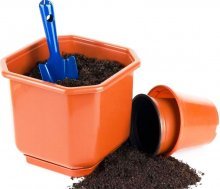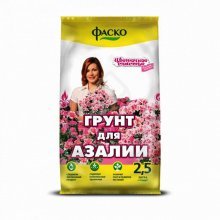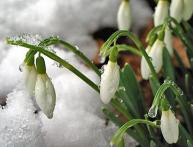Soil for azaleas, composition, acidity, how to prepare it yourself
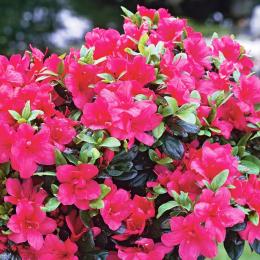
Azaleas are profusely flowering but capricious plants that have won the hearts of gardeners.
Indoor rhododendron pleases with abundant and bright flowering, but only if agrotechnical growing methods are followed.
And one of these conditions is high-quality soil for azaleas, no matter whether it is purchased or prepared with your own hands.
Content:
- Soil for azaleas: composition
- Which is better: buy soil for azaleas or prepare it yourself
- How to make soil for azaleas with your own hands
- Recommendations for planting
- Mistakes that are usually made when preparing a substrate, and how to correct them
- How can you acidify soil for azaleas?
Soil for azaleas: composition
The substrate for azaleas must be specific in composition, since its main task is to support the life of symbiont microorganisms living in the roots of the plant.
Microorganisms help the plant extract all the necessary microelements from the soil. If you manage to destroy the symbionts, the azalea will soon dry up too. For good growth and abundant flowering, the plant requires an acidic environment, with a pH reaction from 3.5 to 5.5.
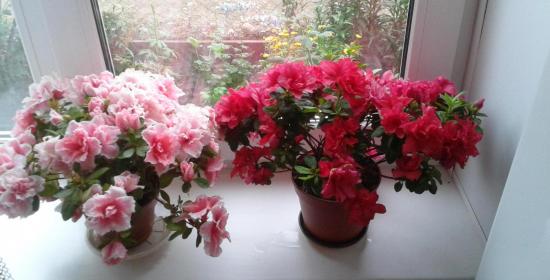
The recommended soil composition should include:
- Peat
- river sand
- Coniferous land
- Perlite
- Mineral supplements
- Vermicompost
Attention! Indoor rhododendron is picky about soil, so you should not buy soil intended for growing other, unpretentious plants.
However, the composition for azaleas is suitable for growing other flowers that love an acidic environment.
In the ground for azalea Gerberas, philodendrons, heathers, cranberries, and pelargoniums feel great.
We invite you to watch a video about what soil should be like for an azalea:
Which is better: buy soil for azaleas or prepare it yourself
For a novice gardener, it is recommended to plant azaleas in a ready-made substrate, although it grows equally well in both store-bought and home-made ones.
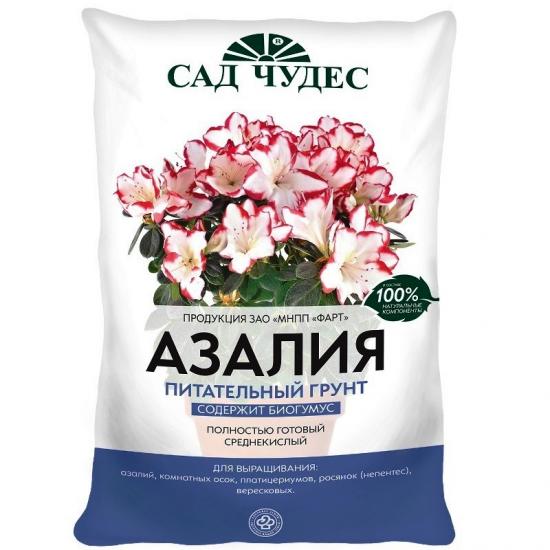
You can find various ready-made soil mixtures on sale, which differ in manufacturer, product quality and price.
It is important to know! When purchasing soil, you need to pay attention to the label and look at the release date. If the soil mixture has been on sale for a long time, it means that it has already lost most of its beneficial substances.
How to make soil for azaleas with your own hands
To prepare the composition on your own, you will have to look for the necessary components and mix them in the required proportions.
Special soil for azaleas should include the main components: peat, leaf, heather and sand. A mandatory component is coniferous soil.
Pine bark is used as a necessary component. It acts as an additional oxidizing agent.
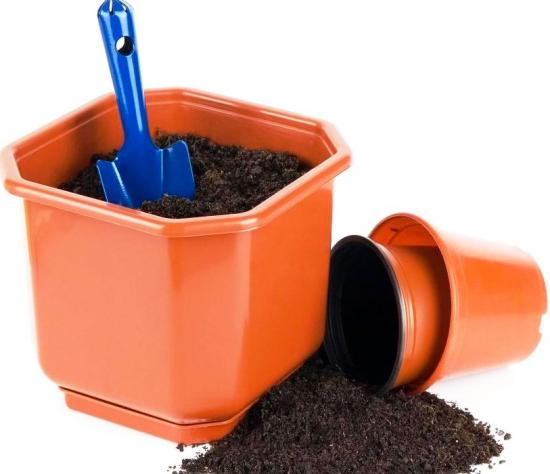
To improve moisture and breathability, it is recommended to add river sand, agroperlite and vermiculite.
You need to disinfect the soil with sphagnum moss or you can add charcoal. It is advisable to use only one component.
Azalea does not like waterlogged soil, so it is recommended to place a drainage layer 3 cm high at the bottom of the pot.
Preparation of the composition with your own hands, proportions:
- Heather soil
- Coniferous land
- Sand
- High peat
- Leaf ground
- Lowland peat
The ratio of components is as follows: 1:2:1:1:2:1.
The structure of the soil should be loose, light, air- and moisture-permeable, but retain moisture. To keep water in the soil longer, it is recommended to add hydrogel in granules.
The modern method is an alternative to drip irrigation. After watering, the hydrogel swells, absorbs excess moisture, and then gradually releases it to the plant.
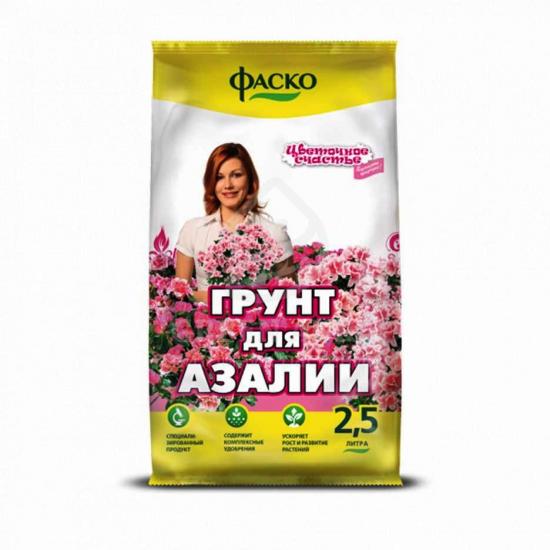
Many gardeners advise adding sawdust, conifer needles, leaf humus, and pine bark to the soil. These components maintain the acidity level in the soil.
Recommendations for planting
To enjoy the lush and abundant flowering of azaleas, it is important to follow some recommendations:
- Indoor rhododendron prefers bright but diffused light. The foliage should not be exposed to direct sunlight. It is preferable to grow on windowsills on the north or west side.
- Content temperature. It is important to note that at any time of the year the room should be cool. Buds are formed at a temperature within +16-18°C, so this regime is considered optimal.
- Watering. Regular watering with soft, settled water is required. You can’t water with warm water, cool is better. When the earthen ball dries out, it is recommended to lower the pot with the plant into a container of water to moisten the soil.
- Air humidity. The moisture-loving plant needs daily spraying of the foliage. But! During flowering, azaleas should not be sprayed.
Young specimens are replanted every year (more likely it will be a transshipment), an adult plant needs to be replanted no more often than once every 3 years.When transplanting or transshipping a plant, you need to be careful with the root system, as it is very delicate and fragile. If you damage the roots, you can destroy the flower.
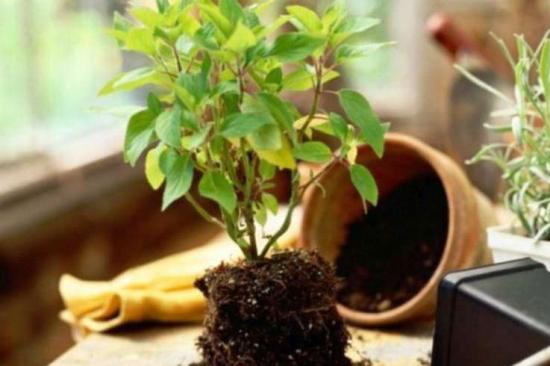
When replanting, it is important to monitor the root collar, which must be left on the surface of the soil.
Note! The period of flower bud formation occurs in October-November, so it is necessary to organize additional lighting.
Let's watch a useful video about planting azaleas:
Mistakes that are usually made when preparing soil and how to correct them
Many gardeners make a lot of mistakes when preparing soil at home.
Too heavy soil. In such soil, the plant simply cannot survive, since the root system will not be able to absorb microelements and vitamins. If it is noticed that the azalea is not growing, replanting it into loose, breathable soil is required.
The soil is slightly acidic. At a low pH level, the life of symbiont microorganisms is impossible, and thanks to them the plant receives all the necessary nutrients.
There is only one way out: add pine bark, coniferous needles, and leaf humus to the soil as quickly as possible.
High peat content. An excess of low-lying peat will result in a heavy, moisture-intensive soil structure. If water stagnates in the soil, the root system will rot. It is recommended to transfer the plant to good soil.
If the soil is chosen correctly, then there is no doubt that the plant will smell fragrant and delight you with flowering. Indeed, in suitable soil, the necessary metabolic processes will take place in the plant itself, and the azalea will have enough nutrition and moisture. If the soil is not selected correctly, the azalea will not grow.
How can you acidify soil for azaleas?
As mentioned above, an acidic environment is required by microorganisms that support vital processes occurring in the plant. An alkaline environment is detrimental to both symbionts and azaleas.
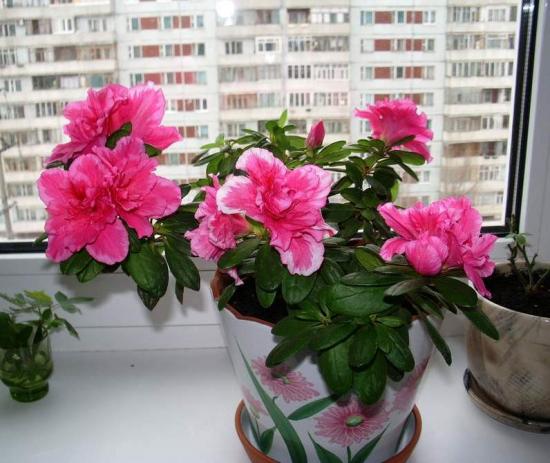
The composition should contain coniferous soil, as it is a natural acidifier. When purchasing a mixture for azaleas, it is important to pay attention to this component.
You can increase acidity by adding pine bark to the substrate. Before use, it must be washed, dried and crushed. Only after this can the bark be mixed into the soil.
If it is not possible to purchase pine bark, it is recommended to go to the store and ask a specialist to select a special acidifier that is used for increasing soil acidity. Use only in accordance with the instructions.
To ensure that the flower does not lose its attractiveness after purchase, it is necessary to replant the azalea in properly prepared soil, since good soil is the key to the long life of indoor rhododendron.


